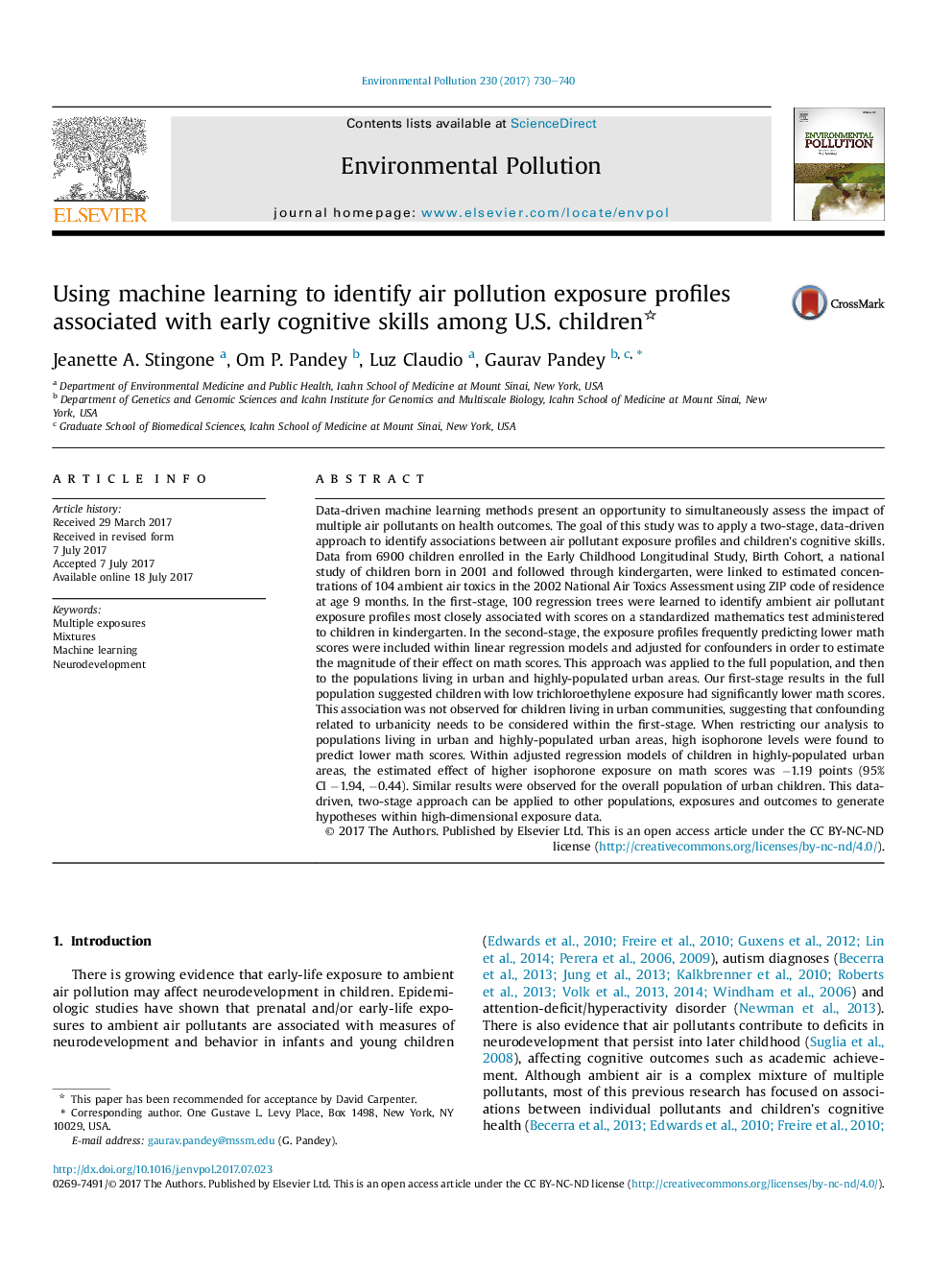| کد مقاله | کد نشریه | سال انتشار | مقاله انگلیسی | نسخه تمام متن |
|---|---|---|---|---|
| 5748720 | 1619143 | 2017 | 11 صفحه PDF | دانلود رایگان |
- Ambient air is a complex mixture but research has examined pollutants one by one.
- Machine learning can identify relevant exposure profiles in high-dimensional data.
- We propose a two-stage approach of machine learning followed by etiologic models.
- Our approach found exposure profiles associated with cognitive skills in children.
- Relevant exposure profiles found can enable future research and interventions.
Data-driven machine learning methods present an opportunity to simultaneously assess the impact of multiple air pollutants on health outcomes. The goal of this study was to apply a two-stage, data-driven approach to identify associations between air pollutant exposure profiles and children's cognitive skills. Data from 6900 children enrolled in the Early Childhood Longitudinal Study, Birth Cohort, a national study of children born in 2001 and followed through kindergarten, were linked to estimated concentrations of 104 ambient air toxics in the 2002 National Air Toxics Assessment using ZIP code of residence at age 9 months. In the first-stage, 100 regression trees were learned to identify ambient air pollutant exposure profiles most closely associated with scores on a standardized mathematics test administered to children in kindergarten. In the second-stage, the exposure profiles frequently predicting lower math scores were included within linear regression models and adjusted for confounders in order to estimate the magnitude of their effect on math scores. This approach was applied to the full population, and then to the populations living in urban and highly-populated urban areas. Our first-stage results in the full population suggested children with low trichloroethylene exposure had significantly lower math scores. This association was not observed for children living in urban communities, suggesting that confounding related to urbanicity needs to be considered within the first-stage. When restricting our analysis to populations living in urban and highly-populated urban areas, high isophorone levels were found to predict lower math scores. Within adjusted regression models of children in highly-populated urban areas, the estimated effect of higher isophorone exposure on math scores was â1.19 points (95% CI â1.94, â0.44). Similar results were observed for the overall population of urban children. This data-driven, two-stage approach can be applied to other populations, exposures and outcomes to generate hypotheses within high-dimensional exposure data.
322
Journal: Environmental Pollution - Volume 230, November 2017, Pages 730-740
